Water for people, habitat for birds
As a Private Lands Wildlife Biologist in northeastern New Mexico, I continue to fall in love with the prairies.
It’s not uncommon for visitors to the Great Plains to look around and say, “there’s nothing out here!” But if you take a moment to stop, slow down, and quietly listen and observe, there is so much to see. Whether conducting bird surveys in the grasslands or standing at the edge a seasonal wetland, the prairies are full of diverse plant and animal life. Of special note are playa lakes, little oases on the plains and hidden gems just waiting for rainfall to wake things up and invite a suite of plants and animals in.
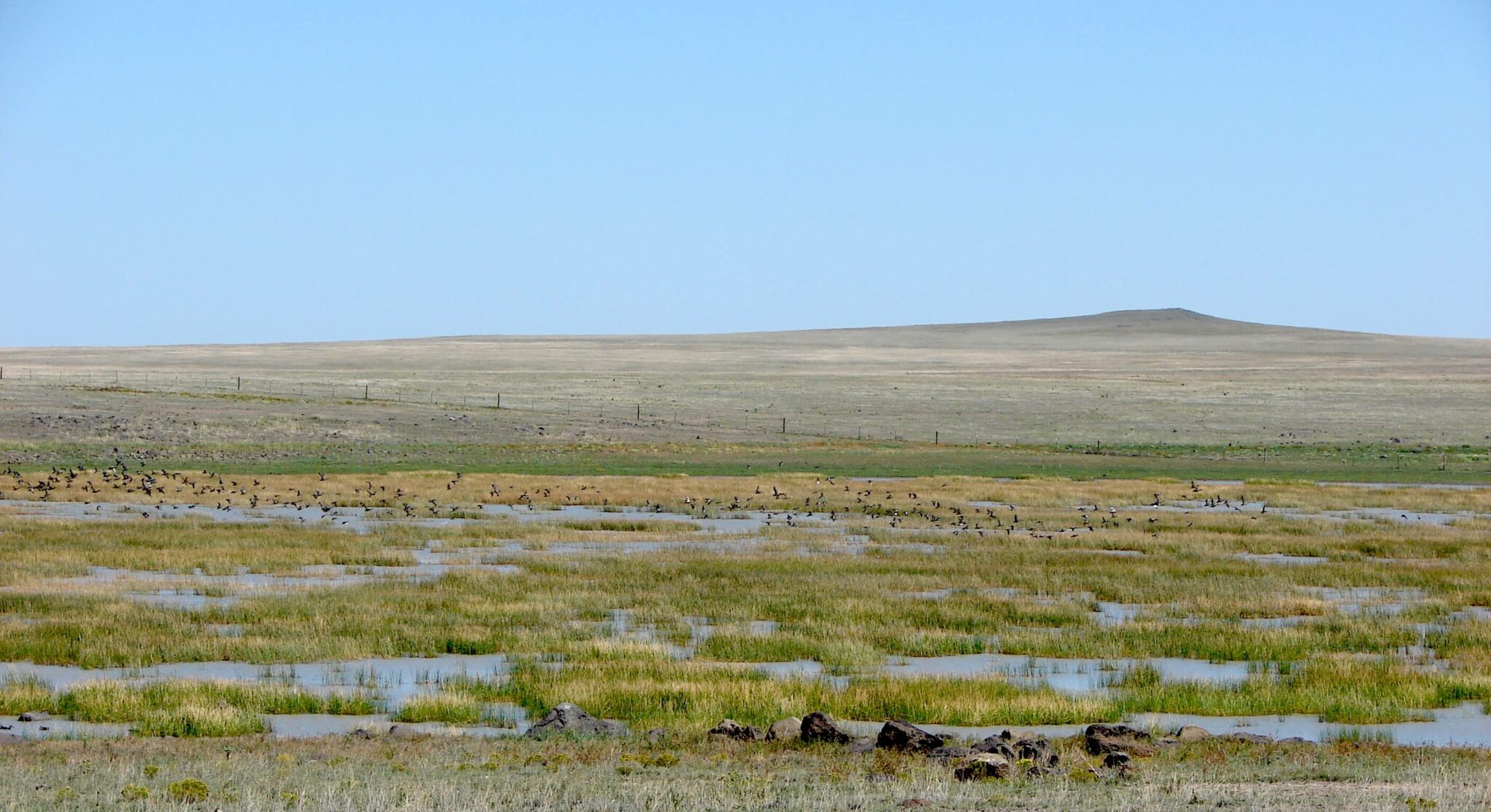
Rock Lake Playa at Kiowa National Grassland in Harding County, NM. Photo: A. Safranek USFS
Wet playas provide an important resource for migrating and breeding birds including American Wigeon, Northern Pintail, Blue-winged Teal, American Avocet, Wilson’s Phalarope, Sandhill Cranes, Long-billed Curlew, and Canada Geese, to name a few. Over the years, many playas have been destroyed and degraded, but voluntary incentive programs are helping playas make a comeback.
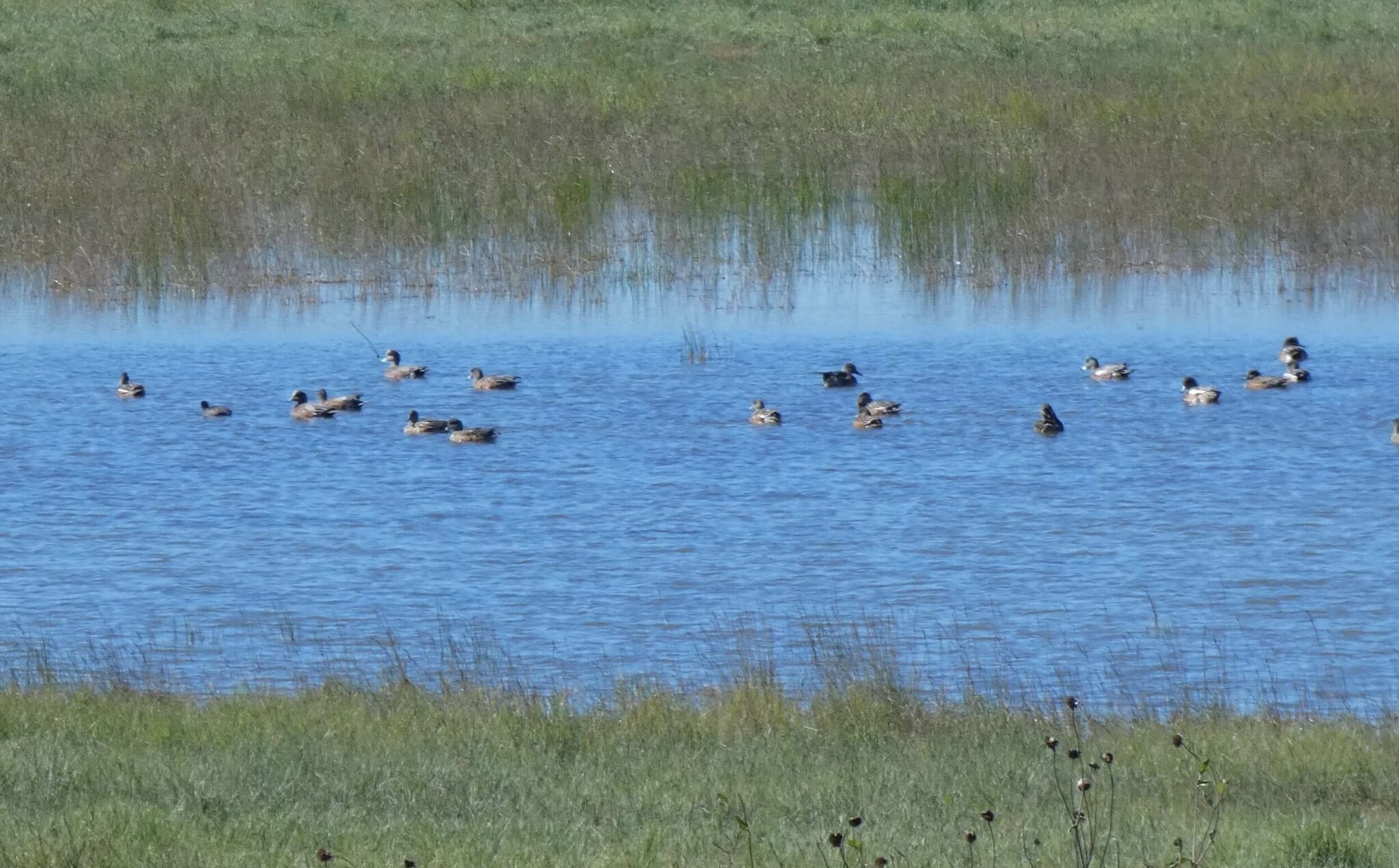
Playas provide habitat for waterfowl. Photo: Christopher Rustay, Playa Lakes Joint Venture
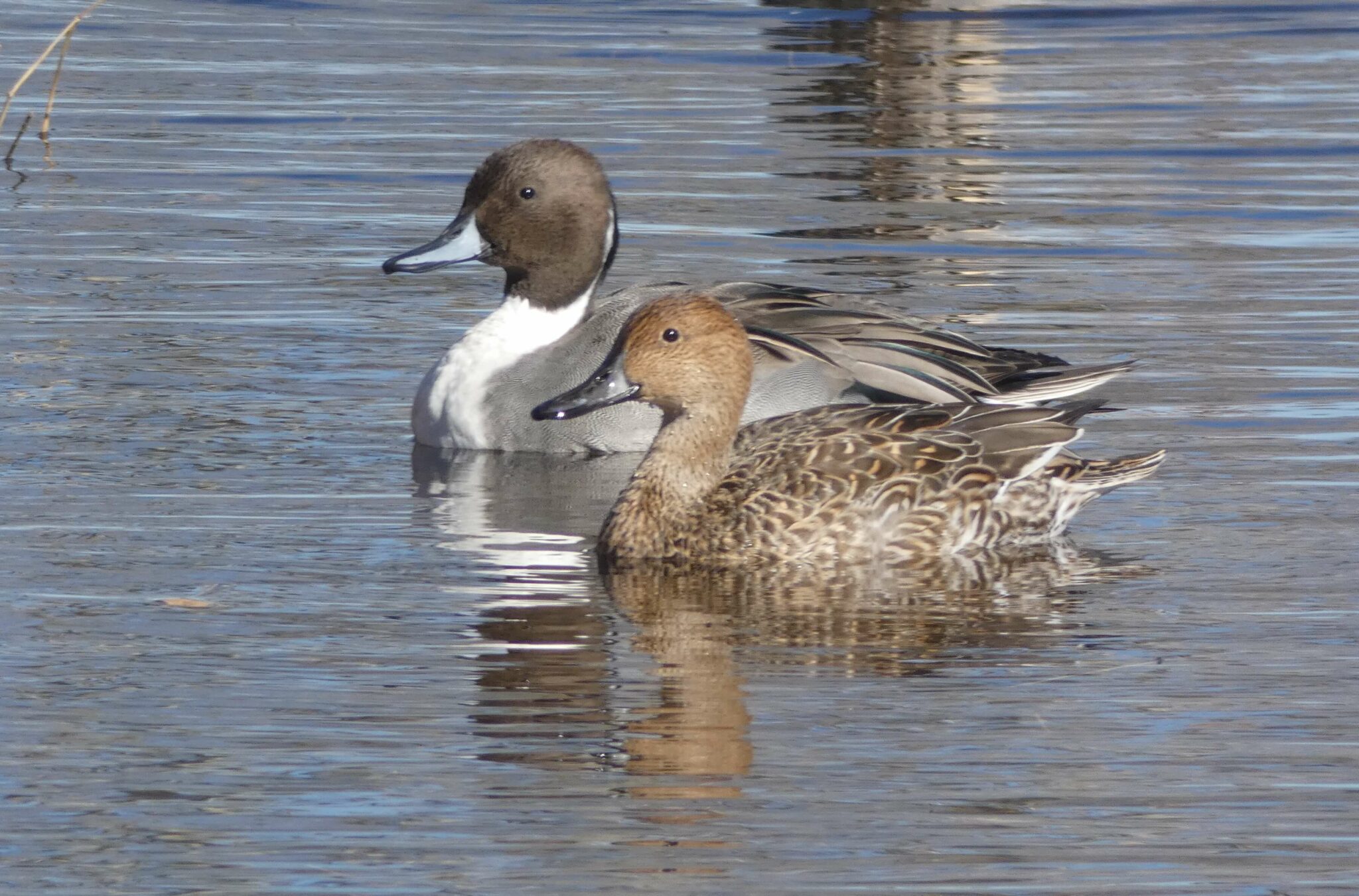
Northern Pintail. Photo: Christopher Rustay, Playa Lakes Joint Venture
What are Playa Lakes?
Playa lakes are unique temporary wetlands that occur mainly in the Western Great Plains. They are shallow depressions lined with clay soil which swells and forms a seal that holds water following rainstorms. They benefit both wildlife and people, including serving as a primary source of groundwater recharge to the Ogallala Aquifer, which provides 30 percent of the irrigation in the U.S. and drinking water for two million people.
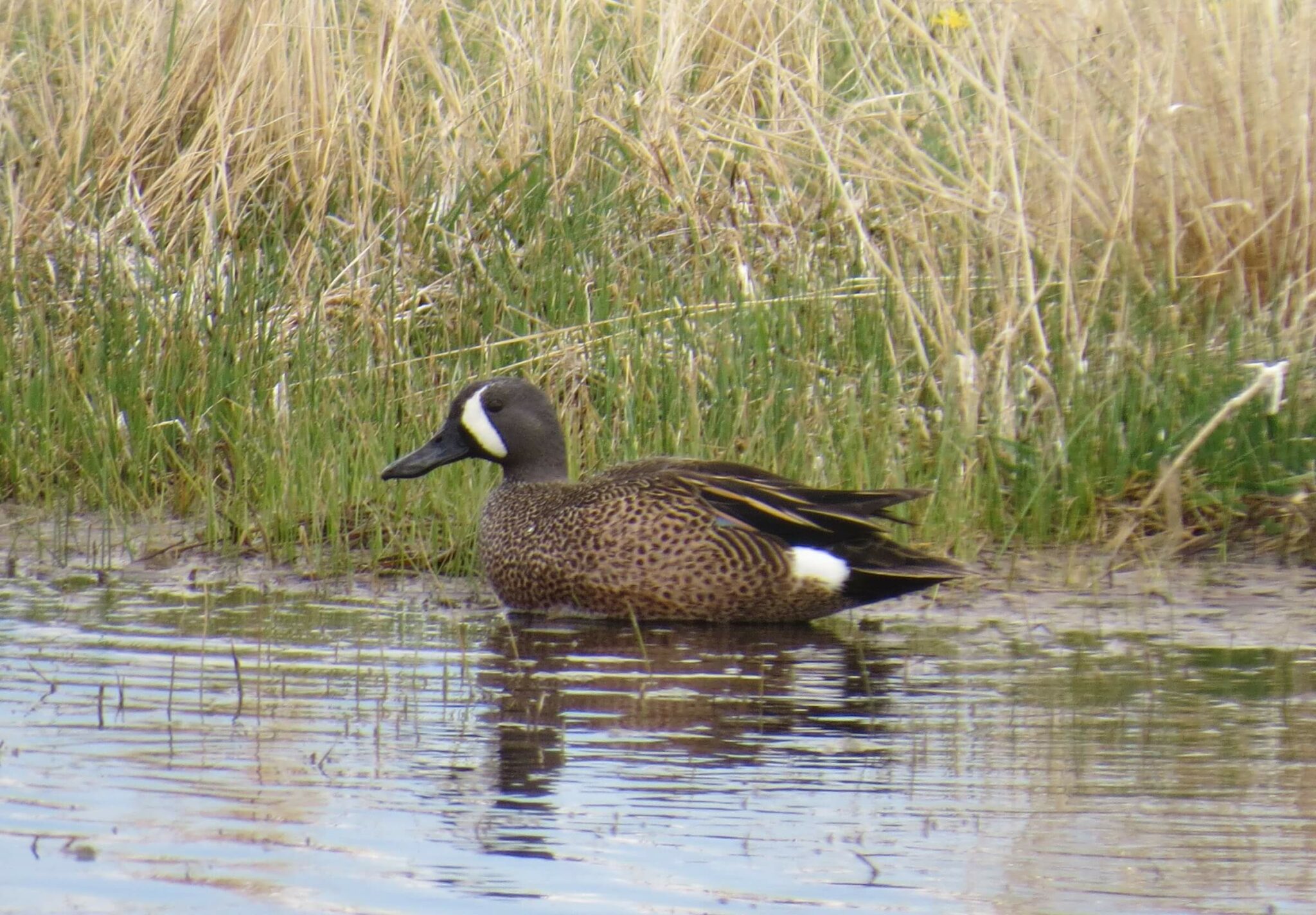
Blue-winged Teal. Photo: Jessie Reese
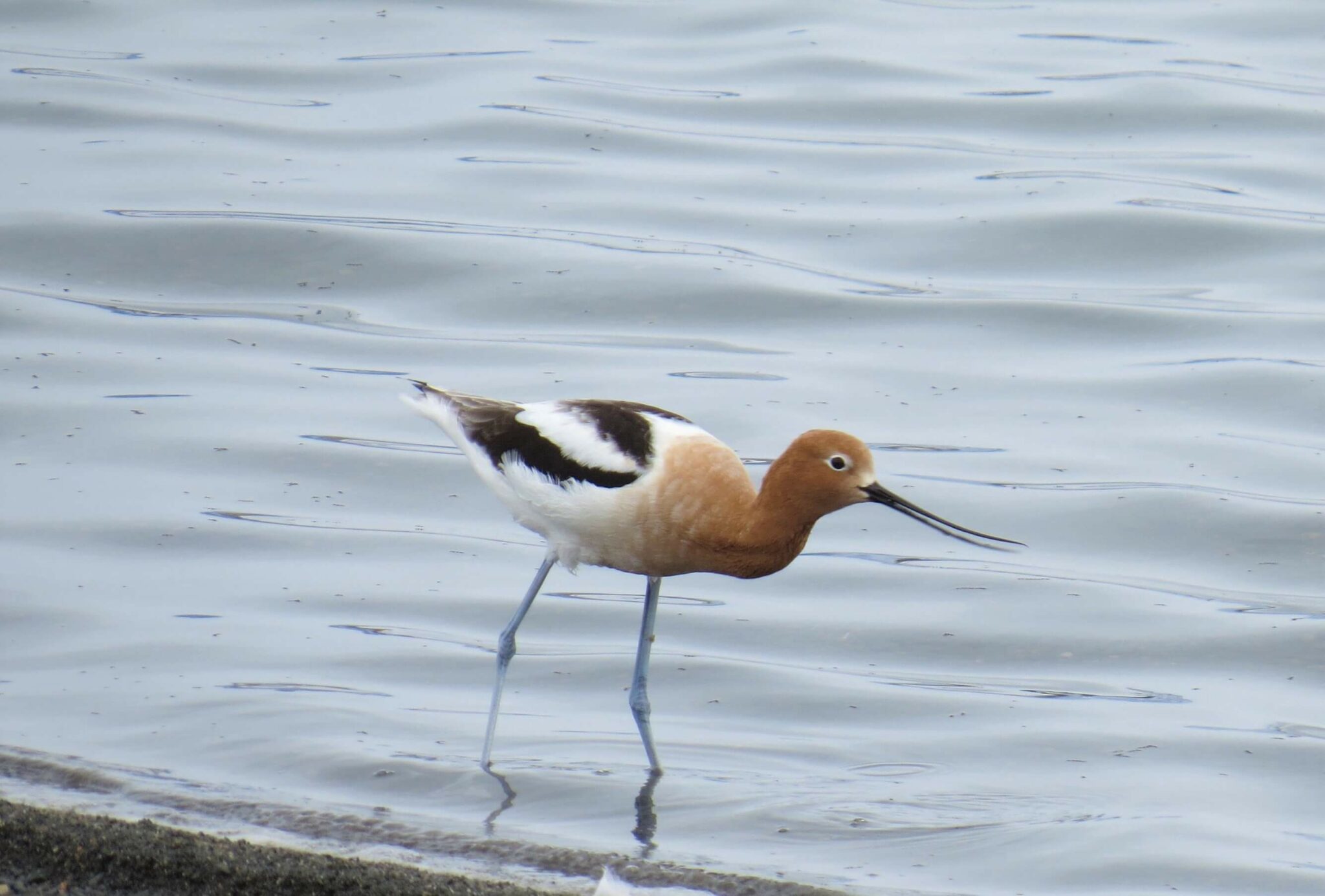
American Avocet. Photo: Jessie Reese
When playas are dry, or interfere with crop production, it may be hard to see their value. But understanding the importance of playa lakes and investing in their care and conservation can yield benefits for humans and wildlife for generations to come. Not only do playas provide groundwater recharge, water filtration, and flood control, but they also provide wildlife habitat and important stopover points for migrating birds.
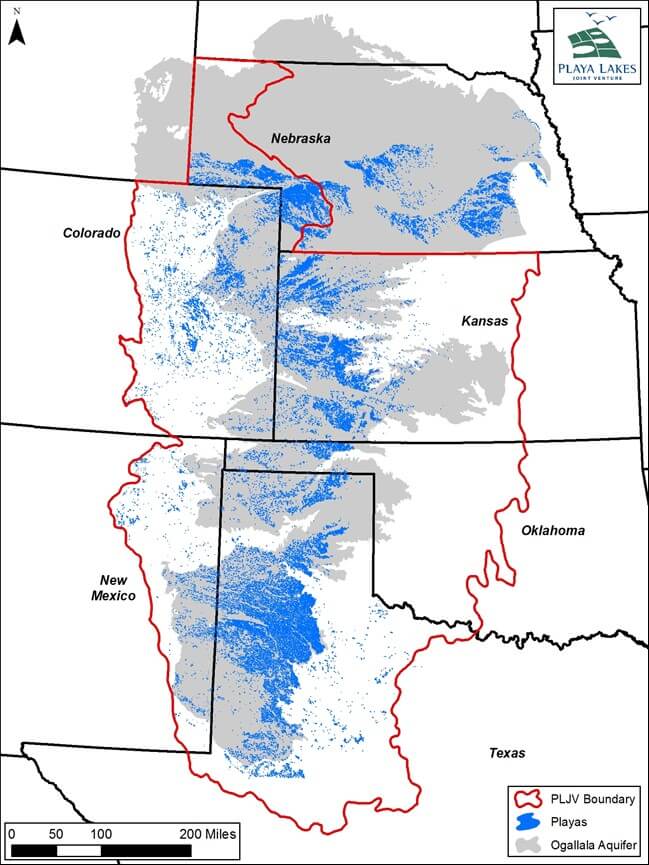
Map courtesy of Playa Lakes Joint Venture
Threats to Playas
Across the West, many playas are degraded and disappearing from the landscape. The primary cause of playa destruction is conversion to cropland or pasture. In the farming business, to take potential cropland out of production means loss of revenue, but trying to farm a playa can be a waste of money because the clay soil is difficult to farm or crops may flood out.
Other threats to playas include modifications such as pits and ditches. For years, landowners dug pits in their playas in an attempt to keep water in it year-round. Unfortunately, this can damage the clay lining in the basin of the playa, actually making it less effective at holding water. Concentrating water into a pit prevents it from spreading across the playa, filling the large cracks, and recharging the aquifer. Additionally, reducing the surface area of the water in a playa limits the diversity of bird species that utilize the playa, such as shorebirds, who access food sources in the shallow water.
Another big threat to playas is sediment accumulation brought in from adjacent developed cropland. Leaving a grass buffer around the playa to trap sediment provides protection. Grazing the grass buffer can also improve wildlife habitat and increase water runoff that will reach the playa and recharge the aquifer.
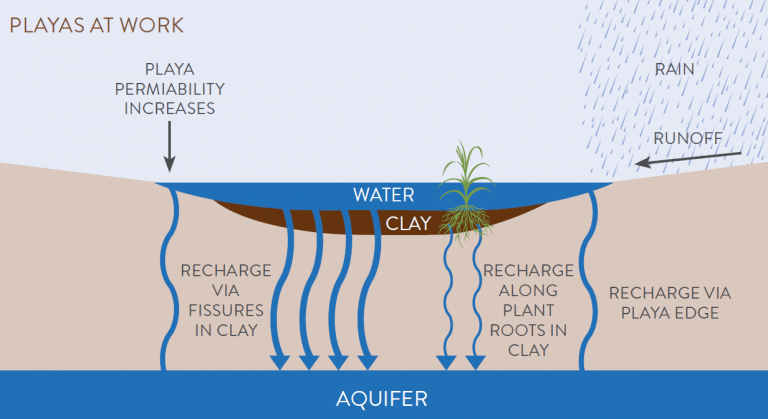
This diagram depicts how water filters down from playas to ‘recharge’ the aquifer beneath, replenishing groundwater. Diagram courtesy of Playa Lake Joint Venture.
Helping restore and conserve our playas
Water conservation, due to drought and shrinking aquifers, is a major concern in the Great Plains region. Playa lakes are an important resource that aid in conserving our water supply. Playa conservation and restoration help ensure they function properly. Fortunately, there are several voluntary, incentive-based programs available to help conserve this valuable resource. With a little help from state and federal agency programs, playas can go from dry, mud-cracked depressions to lush, vegetated expanses filled with birds and holding water even into the middle of winter!
Bird Conservancy of the Rockies is partnering with New Mexico Department of Game and Fish (NMDGF) and Playa Lakes Joint Venture (PLJV) on getting the word out about an exciting program available in northeast New Mexico. The New Mexico Department of Game and Fish Playa Conservation Program provides financial and technical assistance to private landowners to restore the hydrological function and modify water flow to their playas. NMDGF covers 100% of restoration costs with the agreement that the playa will not be farmed for 20 years. Practices to restore playas include sediment removal, buffer planting, pit filling, channel remediation, and other modifications such as berms that allow water to flow into playas.
In addition to the NMDGF/PLJV playa restoration program, the United States Department of Agriculture Natural Resource Conservation Service (USDA NRCS) offers several programs to assist landowners with restoring playas on their land. Visit the Playas Work for New Mexico website for more information on playas, the benefits they provide, and conservation opportunities available, to keep playas working for people and birds for years to come.
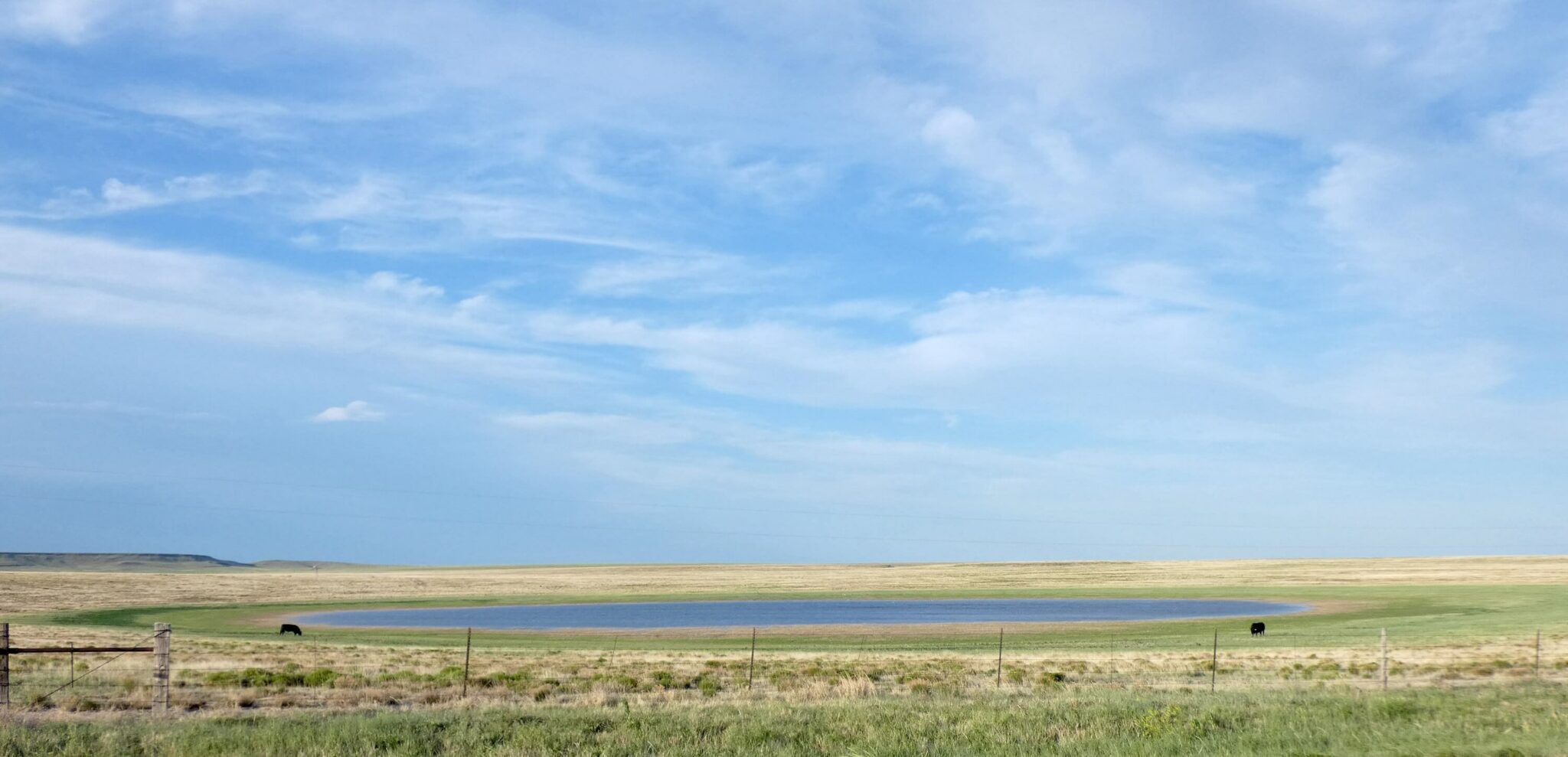
New Mexico playa in grassland. Photo: Christopher Rustay, Playa Lakes Joint Venture
Anna Stearns (based in Clayton, NM) is employed by Bird Conservancy of the Rockies with funding support from the Natural Resources Conservation Service – USDA, New Mexico Department of Game and Fish and the Thornburg Foundation.



